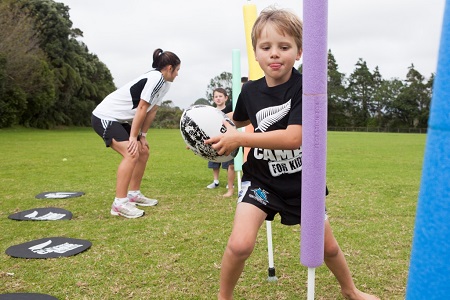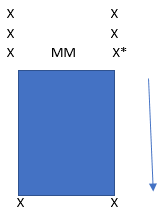- Rugby Toolbox
- Resources & Education
- Learn more
- Articles
- Snook on Coaching
- Ball Familiarisation; Passing & Receiving
- Ruck & Run Drill
- Playing Philosophy – Ruck & Run Coaching Components
- Playing Philosophy – Spread the Forwards
- Playing Philosophy – A forward behind the ruck
- Playing Philosophy – Ruck & Run
- Playing Philosophy – An idea!
- The Breakdown
- Building Positivity [3]
- Building Positivity [2]
- Building Positivity
- Fitness and Game Related Activities
- Getting the Head Working
- Missiles are Dangerous
- Use of Video
- Winger Attacking Outside First-Five
- Player Profiling
- Selection
- Fitness Away from the Team Session
- Playing Philosophy (Pre season Prep)
- Coaching the Coaches
- The Rugby Coordinator and Pre-Season Preparation
- Why Not Use Tap Penalties More Often?
- Why Kick the Ball Down the Middle of the Field?
- Defending the 5 Metre Lineout Drive
- Scoring from the 5 Metre Lineout
- What are the Kicking Team Aiming to Achieve from Halfway Restart
- Should We Practice Scoring Tries?
- Team Culture
- Looking After Your Players
- Coach Survival Tips
- Under 11/13 – Backline Defence
- Under 11/13 – Ruck Defence
- Under 11/13 – Back Attack
- Under 13 – The Counter Attack
- Under 11/13 – The Maul
- Under 11/13 – Lineouts
- Under 11/13 – Decision Making
- Under 11/13 – Support Play
- Under 11/13 – Dive Pass and More
- Under 11/13 – Drop & Grubber Kick /Highball Catch
- Under 11/13 – Front on Tackling
- Under 11/13 – Contact – Getting Up – The Ruck
- Under 11/13 – The Coaching Session
- Under 8/10 – Using Space
- Under 8/10 – Kicking
- Under 8/10 – Contact and Picking Up the Ball
- U8/U10 Draw & Pass and Sidestep
- Under 8/10 – The Tackle
- Under 8/10 – The Coaching Session
- Under 7 – Test Your Coaching – Support Play
- Tap Pass and Swerve U7
- Ball Familiarisation; Passing & Receiving
- Activities for the Non-Contact Tackle
- Under 7 – The Coaching Session
- Coaching Teenagers – After the Ruck
- Coaching Teenagers – The Practice Session
- Coaching Teenagers – Best Practice
- Coaching Kids – Best Practice
- Plays from a Tap Penalty
- Running Plays from a 5 Man Lineout
- Driving Plays from a 5 Man Lineout
- Strike Plays at the End of the Lineout
- Back Strike Plays at the Lineout
- Wide Strike at the Scrum (2)
- Wide Strike at the Scrum
- Midfield Attack at the Scrum
- No 8 Plays at the Scrum (2)
- No 8 Plays at the Scrum
- The Cut Out Pass
- Skills to Penetrate (2)
- Skills to Penetrate
- Movements to Penetrate
- Patterns to Penetrate
- Contact and Continuity
- Keeping the Ball Alive Out Wide
- Pre Season Support Activities
- Checklist
- Understanding the game
- The Playing Philosophy
- The Lineout
- Overview
- Team Profile
- Start Now!
- Backrow
- Nine and Ten
- Rugby-related Fitness Activities
- The Psychological Edge
- Open Field Play
- Key Performance Indicators
- Improving Team Performance
- Backline Attack Concepts
- Tactics at Phase Play
- Playing Philosophy
- The ‘Stop Focus’
- Kick Attack
- Clearing the 22
- Wide Attack at Phase
- Player Focus
- Scrum Preparation
- Lineout Preparation
- Back Attack Preparation
- Sevens Preparation
- Sevens Kick Offs
- Sevens Scrum and Lineout
- Sevens Attack Patterns
- Sevens Defence
- 7's Selection and Game Planning
- Coaching and Leadership
- How the Game Evolves
- Changing Within the Game
- Learning from the Television.
- Using Tap Penalties Wisely
- Defence Drills
- Defence Drills for Tight Five
- Team Defence and TUB’ing
- Establishing Patterns from the Ruck
- Structured Phase Play
- Structuring Phase Play on the Run
- Coaching Roles
- Structuring a Close in Tackling/Defensive Session
- Coaching in Threes
- Attacking Back Play
- Kick Off Chase
- Wrap Around Back Plays
- Lineout Plans
- Looking and Learning
- Motivating Your Players
- Scrum Attack
- Refocusing the Team
- Monitoring the Progress
- Learning the Game
- Playing to the Laws
- Small is OK
- Decisions After the Tackle
- Improving Your Coaching
- Food for Thought
- More Food for Thought
- Passing & Catching
- How Ireland Nearly Beat the All Blacks
- The Progressive Coach
- Try Something New
- Encouraging Excitement
- The Mental Approach
- Where to Start
- Being the Best You Can Be
- Off the Ball Decisions
- Lineouts Difficult to Master
- Decisions on the Run
- Rucking and Rolling
- A Successful Approach
- Gaining Clarity
- Manipulation vs Physicality
- Beating the Drift
- To Ruck or Not to Ruck
- Stopping the Lineout Drive
- Fine Tuning the Planning
- It's a Running Game
- RugbySmart 2015
- Using the Shoulders
- Loosehead Prop / Tighthead Prop
- Position Specific – Hooker
- Position Specific – Lock
- Position Specific – Blindside Flanker
- Position Specific – Openside Flanker
- Position Specific – No 8
- Position Specific – Halfback
- Position Specific – First Five Eighth
- Position Specific – Second Five Eighth
- Position Specific – Centre Three-quarter
- Position Specific – Wing
- Position Specific – Fullback
Ball Familiarisation; Passing & Receiving

U7 Activities for Ball Familiarisation; Passing & Receiving
BALL FAMILIARISATION
The coach should have as many balls as possible available at training. One each is the ideal and one between two is the least number desirable. The more often a player handles the ball the more competent he will become.
Let the players run and pass and play with the ball as soon as they arrive at training before you start. A few simple rules such as staying in a designated area is all that is required.
Ball familiarisation is a good warm up activity. Mark out a large grid (15 x 15) which acts as the boundary for the players. They must stay inside this grid but can run in any direction and change direction as often as they like.
Then there are any number of activities which can be carried out:
- Running with the ball in two hands – speed up and slow down on the call – keep looking forward so as to not run in to another player - score a diving try on the whistle – get up quickly and go again.
- Bounce and catch the ball as they jog around
- Throw it in the air and catch it as they jog around
- Roll the ball forward and run after it and pick it up.
- Place the ball on the ground by pressing it down with two hands on the side of the player – run on and return to pick the ball up in two hands at the side
- Move the ball around the body as they jog around
- Stand on the spot and move the ball under the right leg then under the left leg by lifting the leg.
- Stand on the spot and move the ball between their legs in a figure of 8 motion.
- Make up your own
In Pairs: - run around passing it backwards and forwards to each other.
- Start a metre apart and the ball carrier is chased and tagged with two hands if the chaser can catch him. Swap over.
- One partner rolls the ball out and the other partner chases and picks it up. Continue on.
- Do all the above activities for 20 seconds then swap with the partner.
Skills when running with the ball:
-
Carry the ball in two hands about chest height.
-
Fingers spread out on each side of the ball and facing upwards.
BASIC PASS
Techniques:
-
Hold the ball in two hands at chest height with fingers spread on each side of the ball facing upwards
-
Rotate the ball and the hands so that the fingers are now facing downwards
-
Swing both arms across the body staying side on to the pass
-
Follow through with the arms and point the fingers to the area at chin height and out in front of the receiver that the ball is aiming towards
-
Keep the arms up momentarily so that the ball flies straight.
-
The hips stay square with the upper body rotating.
Activities:
- In pairs a metre or more apart side on to each other. Pass across the body to the designated spot in front of the receiver at chin height. Once they can do this place them under a bit of pressure by doing the following: how many passes in 30 seconds / jogging and passing in pairs down a channel / passing on their weak hand doing the same activities. (Weak hand is when the hand propelling the ball with the follow through is the furthest away hand which is not as comfortable as the other hand. Normally the left hand)
Middle Man: Use a grid 5m wide and about 7m long. At one end there is one player on each corner. At the other end there is a player on each corner and a player in between them. This group have the ball on one corner. Any extra players line up evenly behind the corner players at the end with the ball.
On ‘go’ the group with the ball start jogging forward and passing. When the third player receives it he pops it off to the waiting player at the corner they have run to. The two corner players who have already run and passed wait at that end and the middle man turns and runs and passes with the two waiting players. This continues until the coach calls ‘change’ at which time the middle man changes over.
RECEIVING THE PASS
Techniques:
-
Hands extended forward and towards the ball at chin height.
-
Fingers spread and facing upward.
-
Chin up, eyes open, watching the ball.
-
Move forward to catch the ball in front so that the head is still facing up and forward.
Activities:
- Use the same activities as for passing with an emphasis on the catching technique.
-The players line up and prepare to run past the coach and receive a pass. The coach will have all the balls so that the whole group continue through. If there are not sufficient balls for everyone the ball should be passed by the receiver to another player who places them on the ground. As soon as the balls are all used then the coach moves to the new starting point where the balls have been placed and the activity continues.
The coach can introduce more skills after the ball has been caught by coaching: a change of pace / a change of angle / a swerve / another pass to a second player in support / use Rippa belts and have a tackler in place and a support player.
Make sure the players practice receiving the ball on both sides of their body.